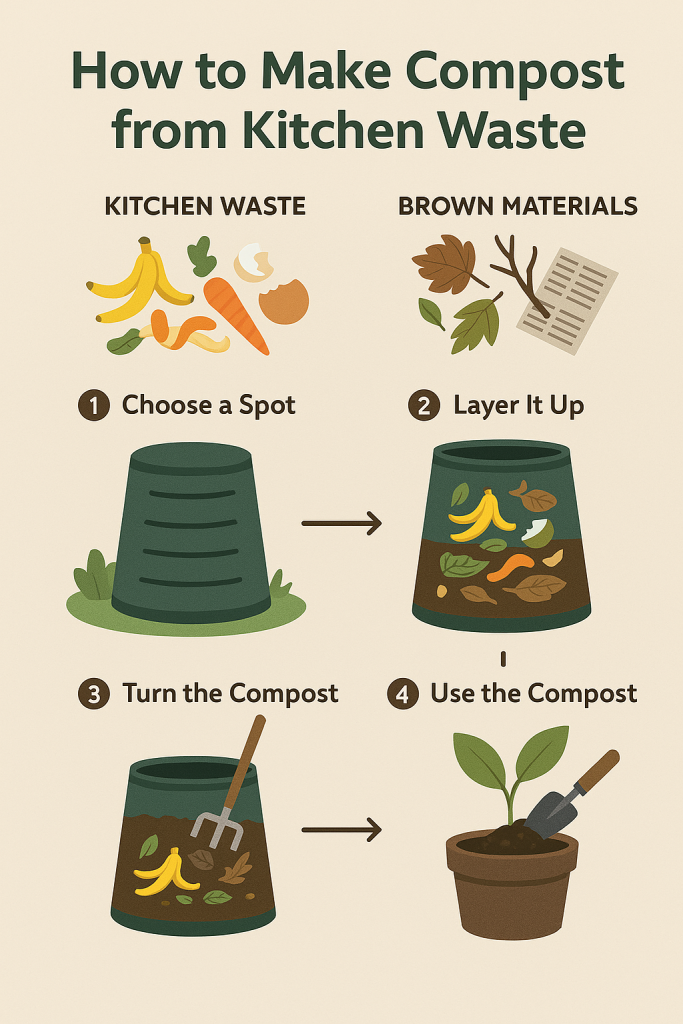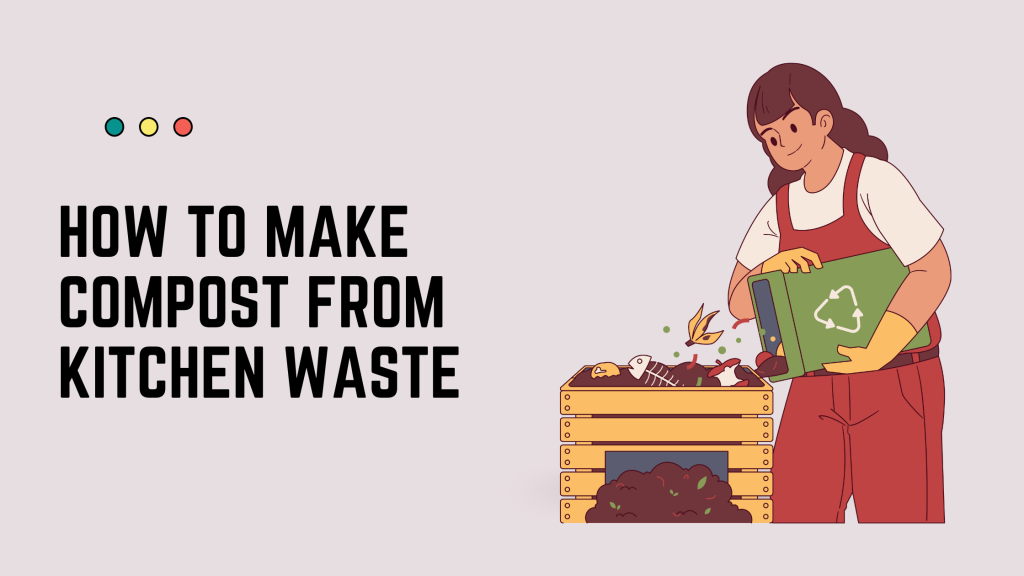With growing awareness around sustainability and zero-waste living, composting has become an eco-friendly habit that anyone can adopt. One of the easiest ways to start is by using your kitchen waste to create nutrient-rich compost for your plants or garden. It’s simple, cost-effective, and great for the environment.
Let’s break down exactly how you can turn everyday kitchen scraps into black gold for your soil.
What is Composting?
Composting is the natural process of recycling organic matter, like food scraps and leaves, into a valuable fertilizer that can enrich soil and plants. It’s nature’s way of recycling.
What You’ll Need
-
A compost bin or a designated compost pit (can be bought or DIY)
-
A mix of green waste (kitchen scraps) and brown waste (dry material)
-
A garden fork or stick for mixing
-
A bit of patience and consistency!
What to Compost (Green Waste)
These are your nitrogen-rich materials:
-
Vegetable peels
-
Fruit scraps
-
Coffee grounds and tea bags (without plastic)
-
Crushed eggshells
-
Bread (in small amounts)
-
Old spices or herbs
-
Meat, fish, or bones
-
Dairy products
-
Oily or greasy food
-
Diseased plants
What Not to Compost
Avoid these to keep your compost healthy and odor-free:
-
Plastics or synthetic materials
-
Pet waste
Don’t Forget the Browns!
Brown waste is essential to balance out the moisture in green waste and provide carbon. This includes:
-
Dry leaves
-
Newspaper or cardboard (shredded)
-
Sawdust (untreated)
-
Twigs or small branches
A good compost ratio is 3 parts brown to 1 part green.
How to Make Compost From Kitchen Waste

1. Choose Your Spot:
Select a dry, shady corner of your backyard or balcony for your compost bin or pit.
2. Layer It Up:
Start with a layer of dry brown materials at the bottom. Then add a layer of green kitchen waste. Alternate the layers as you go.
3. Chop for Speed:
Smaller pieces decompose faster. Chop larger peels or stems before adding them.
4. Maintain Moisture:
Your compost pile should be damp—not soggy, not dry. Think of the feel of a wrung-out sponge.
5. Turn the Pile:
Aerate your compost every 5–7 days using a stick or fork. This speeds up the decomposition and prevents odor.
6. Be Patient:
Depending on the conditions, compost is usually ready in 2–3 months. It will look dark, crumbly, and smell earthy.
Using Your Compost
Once ready, you can use compost in:
-
Potted plants
-
Vegetable gardens
-
Flower beds
-
Lawns
-
As a natural fertilizer or soil conditioner
Bonus Tips
-
Keep a small compost bin or container in your kitchen to collect scraps daily.
-
If it starts to smell, add more brown material and mix it well.
-
If it’s too dry, add a bit of water or more green waste.
Want to Create Compost Easily: Try Ecomposter Composting Culture
Ecomposter Composting Culture offers a simple, eco-friendly approach to turning kitchen scraps and yard waste into nutrient-rich garden compost. Using a compact, enclosed composter—perfect for your countertop or backyard—this method requires minimal effort, making sustainable composting accessible for everyone.


